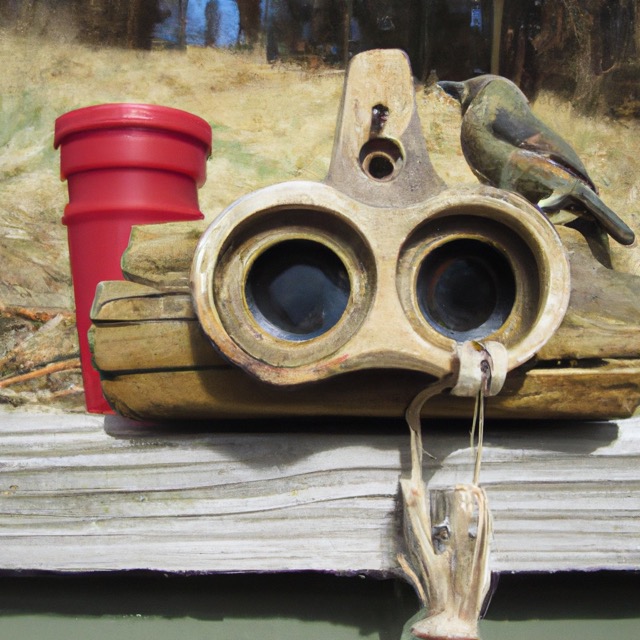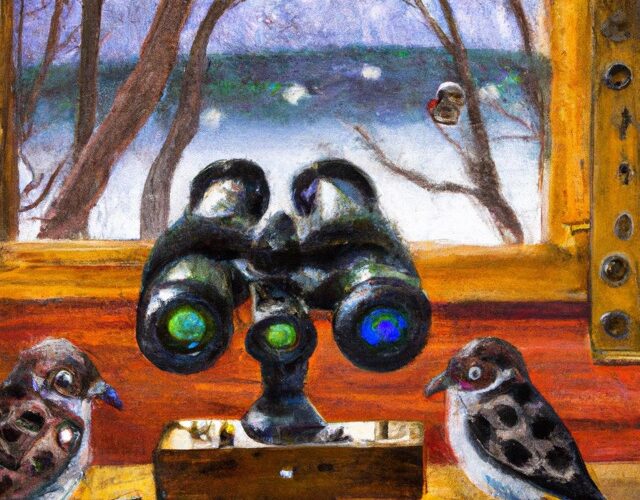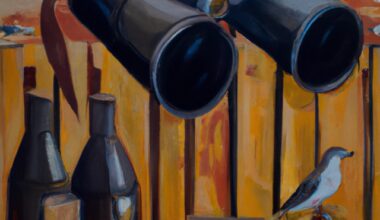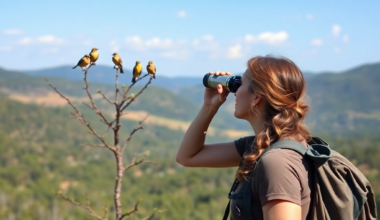Bird watching houses are the perfect place for bird enthusiasts to observe and admire different feathered species in their natural environment. Bird watching houses are usually made to be easily visible from a distance and often come in varying sizes and styles. They provide shelter and protection for the birds and are an essential part of creating a successful bird watching experience.
Bird watching houses can be constructed yourself or purchased pre-made. No matter which option you choose, it is important to understand the design and considerations that should be taken into account when building or buying a house. This guide will provide all the necessary information to enable you to create a safe and inviting bird watching house.
From understanding the different factors to take into account when planning and designing the house, to providing tips on how to attract birds to your house and maintain it over time, this guide will provide all the information you need to complete your project successfully.
Planning & Design Considerations for Building a Bird Watching House
Building a bird watching house can be an exciting and rewarding experience, however there are a few key considerations that need to be taken into account prior to beginning the process.
In this section we will list some of the most important planning and design factors to consider when making your bird house.
- Location: Choose the right location for your bird house by selecting a quiet and sheltered area, away from harsh weather, predators, and other animals that may disrupt the bird’s nesting environment.
- Size: Different species of birds can require different sized houses, so make sure you check the recommended sizes of the bird species you would like to attract prior to purchasing or building the house.
- Height: The ideal height of the house should be between 5-10 feet off the ground.
- Materials: The material of the birdhouse is important as it should be sturdy but easy to clean. Popular materials include wood and plastic, but be sure to note the drawbacks and benefits of each material when deciding.
- Ventilation: Ventilation is essential to keep the birds cool during summer months and provide adequate airflow. Make sure there are small holes at the top and bottom of the bird house to enable air circulation.
- Roof: The optimal roof should be slanted outward to avoid any water entering inside the birdhouse.
- Entrance Hole: Choose an entrance hole size that is suitable for the type of birds you want to attract, ranging from 1-1.5 inches for smaller birds to 3 inches for larger species.
By following these guidelines and keeping these key considerations in mind, you are well on your way to creating an ideal home for your feathered friends to come and nest in.
Buying a Pre-Made Bird Watching House
Buying a pre-made bird watching house is a great way to enjoy the benefits of bird watching without having to go through the hassle of building a house from scratch. There is a wide variety of bird houses ready to purchase, each with its own pros and cons.
When selecting a pre-made bird house, it is important to consider the size, the shape, the material, and any other features the house has. Smaller bird houses will attract smaller birds, while larger houses are great for bigger birds. Similarly, circular shaped houses are attractive to hummingbirds and wrens, while more rectangular shapes may be better suited to bluebirds or woodpeckers.

The material of the birdhouse should also be taken into account when making a purchase. Wooden birdhouses are a popular choice as they are natural, but require frequent maintenance to remain durable.
Other materials such as metal and plastic may be more resistant to weathering, but could be off-putting to certain species. It is worth researching what type of birdhouse would be more suited to your environment.
Pre-made bird houses can also come with various features such as removable roofs for easy cleaning, ventilation holes, drainage holes, and perches for birds to rest on. These extra features may be beneficial to attract certain kinds of birds as well as keeping the birdhouse functional. Be sure to look at the different options available before making a decision.
Building a Bird Watching House
If you’re looking to make your own birdwatching house, the good news is that it’s easier than you might expect! Building your own birdhouse is an enjoyable and rewarding project that can be completed with a few basic tools.
The first step in building a birdwatching house is selecting the right materials. The most common type of material used is wood, as it is an ideal choice for birds as it is strong as well as being lightweight. Cedar and redwood are both excellent choices for birdhouse construction, as they resist rot and decay better than other types of wood.
The next step is to cut the wood into the necessary pieces – the base, sides, and roof – according to the plans you want to follow. It is important to ensure that all of these pieces are cut to the same size for a neat finish. If you don’t have access to power tools, you can use a hand saw, chisel, and sandpaper to cut and shape the pieces.
Once the pieces are cut, you can start assembling the birdhouse. Start by attaching the base to the sides and then adding the roof. You can use nails or screws to attach the pieces, with the latter being more secure. After the main body is put together, add any decorative features such as perches, nesting compartments, and ventilation holes.
Finally, you will need to finish the birdhouse. Depending on the type of wood you have chosen, you will either paint or stain the birdhouse. Make sure you use a weatherproof paint or stain that won’t fade over time. Once the birdhouse is finished, install it in the proper location and wait for the birds to come!
Finding the Right Location for Your Bird Watching House
Location and Installation of Bird Watching Houses is essential for bird enthusiasts. It is important to select the right spot to install the bird house in order for it to be the most effective. The ideal location would be a spot that provides the birds with protection from excessive winds, rain, and direct sunlight.
It should also be placed away from any potential dangers such as cats, hawks and other predators. If the bird house is to be installed on a tree, be sure to check for any branches that are too low and could potentially block entry into the house.
Further steps must also be taken to ensure the house is ready for use. It is crucial to make sure all pieces of the house fit together securely to protect against the elements. Make sure the house is firmly attached and secured to its base or pole and there are no gaps in between the parts.
Additionally, check to ensure any perches or platforms are securely mounted. These small details will maximize the effectiveness of the house and make sure the birds feel safe inside.
Finally, it is important to consider the size of the house and make sure it is suitable for the birds you want to attract. For example, smaller houses should be used for titmice and chickadees while larger houses are best suited for owls and woodpeckers.
By following this guidance, bird watchers can be sure to have a successful installation of their bird houses.
Attracting Birds to Your House
If you’ve built a bird house, the next step is getting birds to use it. There are several methods to do this.
Adding Perches and Other Attractions
Birds will be more likely to stop by your bird house if they have a place to perch. Make sure to add a few small perches either outside or inside the bird house. You can also add other attractive decorations to the outside of the bird house such as flowers or branches.
Providing Food
Make sure to provide food sources nearby the bird house. This can include setting up a bird feeder, laying out bird seed, or hanging a fruit feeder. Keep an eye on the bird feeder and make sure it’s always topped up.
Avoiding Predators
It’s important to make sure birds feel safe when using the bird house. To do this, take steps to avoid potential predators. These can include cats, dogs, hawks, and other birds. Make sure to keep these predators away from the bird house by trimming away any nearby bushes, trees, or shrubbery. Additionally, make sure to keep the area clean of debris which could attract predators.
Care & Maintenance
Taking care of a bird watching house is important for the safety of the birds that use it, as well as for the cleanliness and longevity of the house. Proper cleaning and inspection should be done regularly to ensure the bird house remains in the best condition.
The bird house should be cleaned out once a year, or more often if necessary. Cleaning out any nesting material or debris helps to prevent the spread of disease and parasites. It is important to use a soft brush or damp cloth when cleaning, as harsh materials such as wire or rough cloth can damage the bird house. Care should also be taken when handling the bird house to avoid injuring the birds.
In addition to cleaning, regular inspections should be done to check for signs of damage or deterioration. Any broken pieces, holes, cracks, or large gaps should be repaired as soon as possible. Be sure to replace any missing shingles and make sure there are no sharp edges that could injure the birds. It is also important to check for signs of pests, such as mites, beetles, or other insects.
Finally, it is important to provide a safe environment for birds by setting up perches and providing food. Additionally, it is important to be mindful of predators, and to take steps to ensure that the birds are safe from harm. This may include providing cover from the weather and protecting the bird house from potential predators.
Conclusion
In conclusion, building a bird watching house can be a rewarding experience for bird enthusiasts and nature lovers. It provides a comfortable and safe space to observe birds in their natural habitat, and can attract a wide variety of bird species to your backyard.
Whether you decide to build your own bird watching house or purchase a pre-built one, it is important to consider the design, materials, and location to ensure the best possible bird watching experience.
With proper care and maintenance, a bird watching house can provide years of enjoyment and unforgettable moments of bird watching.
Fly in the Right Direction: A Guide to Constructing a Bird Watching House FAQ
What is a bird watching house?
A bird watching house is a small structure designed to attract birds to your backyard or garden. Also known as a birdhouse or nest box, it is a safe and comfortable place where birds can build their nests, lay their eggs, and raise their young.
What benefits does bird watching provide?
Bird watching is a relaxing and rewarding hobby that allows you to connect with nature, learn about different bird species, and observe their behaviors and interactions. It can also help with stress relief, mental health, and education.
What type of birds can I attract with a bird watching house?
You can attract a variety of bird species depending on your location, climate, and habitat. Some common birds that like to nest in birdhouses include bluebirds, house sparrows, wrens, chickadees, and purple martins.
What are the best materials to use for a bird watching house?
The best materials to use for a bird watching house are natural and weather-resistant, such as cedar wood, red cedar, or fir. They also provide good insulation and ventilation for the birds. Avoid using treated wood or materials that could harm the birds or their eggs.
What features should I look for in a bird watching house?
The features you should look for in a bird watching house are the entrance hole size, predator guard, easy-to-clean design, and weatherproofing. The entrance hole should be large enough for the intended bird species, but small enough to prevent predators from entering. A predator guard can also help protect the birdhouse from predators, such as cats or squirrels. Make sure the birdhouse is easy to clean and maintain, and weatherproof for all seasons.
What is the best way to attract birds to my bird watching house?
The best way to attract birds to your bird watching house is to provide food and water sources nearby, such as a bird feeder or bird bath. You can also plant native plants, trees, and flowers that attract birds and their insects. Use bird watching binoculars to spot birds and observe their behavior.
Can I customize my bird watching house?
Yes, you can customize your bird watching house by painting or decorating it with non-toxic materials, such as acrylic paint or natural dyes.




